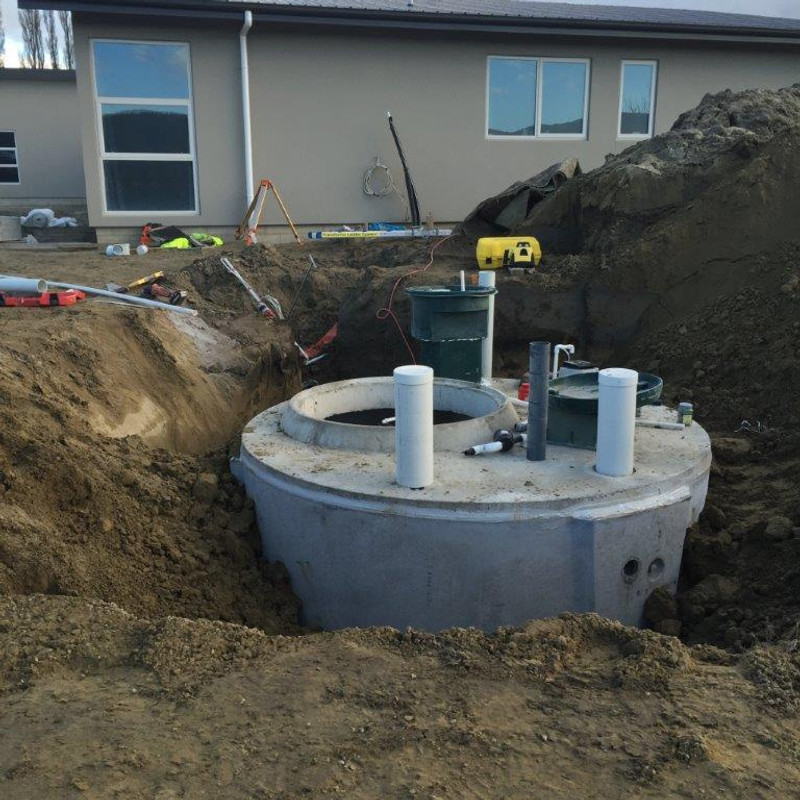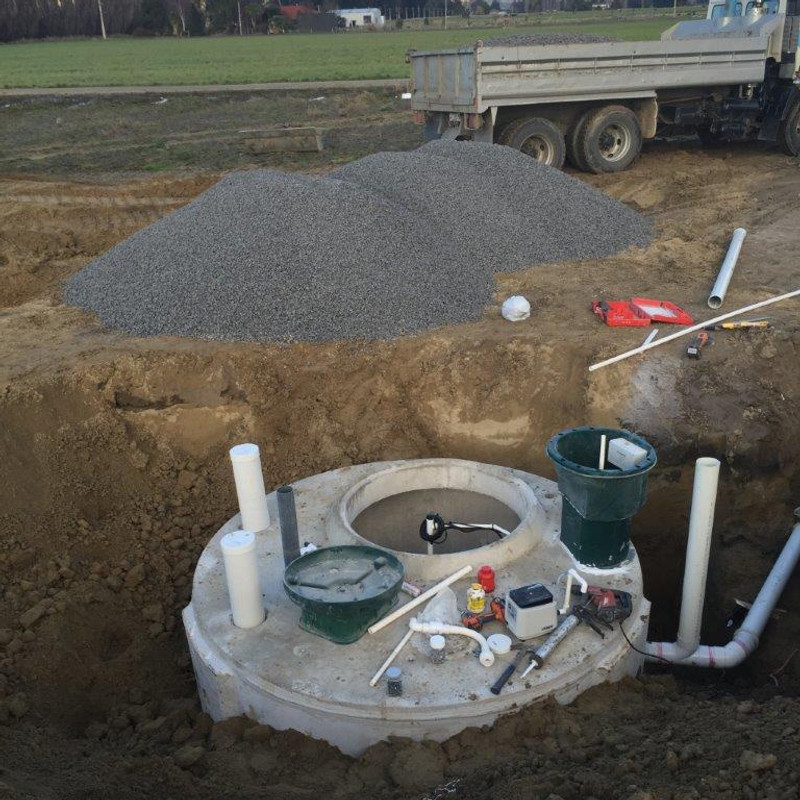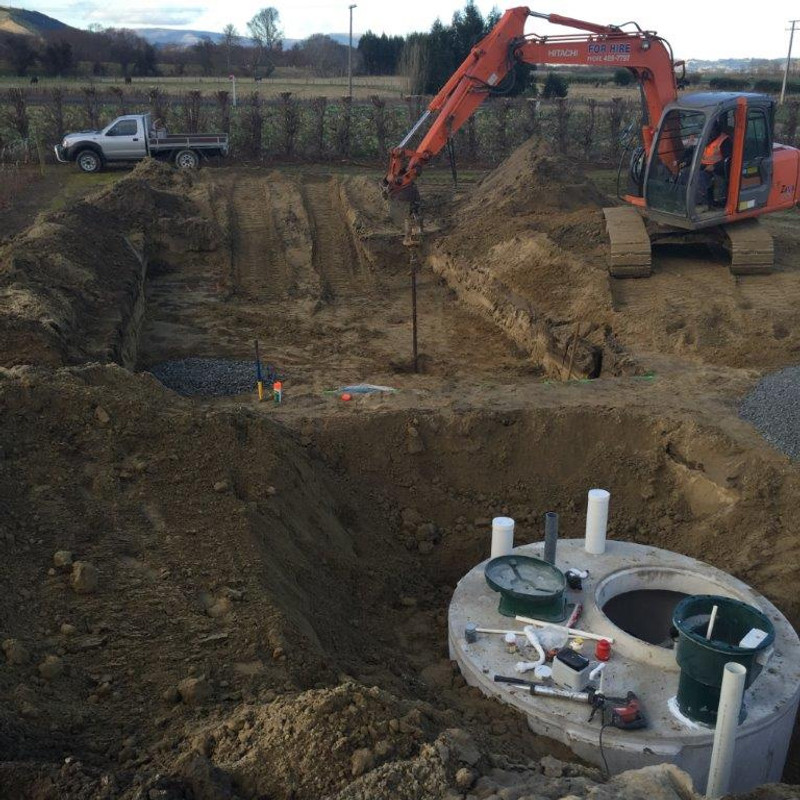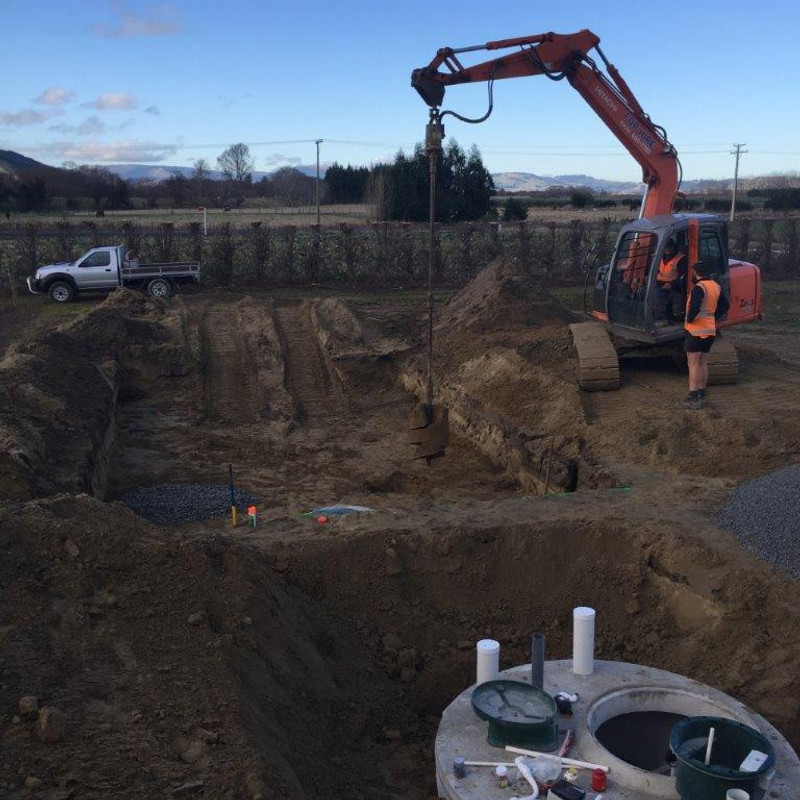What is the process for getting a septic tank?
Onsite visit
An onsite meeting with the client is required to complete a site evaluation which would include the likes of:
- Identifying correct boundaries.
- Slope of the land.
- Any water bores on site, any natural water courses.
- Water table height.
- Percolation test – a test to confirm the soakage availability of the ground.
- Proposed site plan detailing the number of bedrooms.
- Water supply type i.e. tank water, town supply, trickle supply.
- Access to the site.
- Site size.
- Location of the new dwelling on the site.
- If there is a history of instability on the site.
- If there are any current discharge consents.
- Where the disposal area would be best suited.
- Need to identify whether the site is not within the Otago Regional Council ground water protection zone.
- What plants and vegetation would be best.
- Specific council guidelines.
- If the area needs to be fenced off to protect it from stock.
Once the site evaluation is complete and the required information is gathered, we can then start the design process. This documentation is then lodged with the council for consent.
Council approval
We work with the Clutha Council (CDC), Dunedin City Council (DCC), Otago Regional Council (ORC) and Waitaki District Council. If you have access to a main sewage system, you can’t have an on-site sewage system. Councils often provide their own specific Septic Tank guidelines (eg. ORC recommend 165 litres of water (minimum) per person, per day. We recommend 180-200 per person per day to ensure your tank and outfield is adequate.
Legal requirements for septic tanks
You’ll need a building consent to install a septic tank and you will need to meet council requirements (which we can help you with). Some councils ask for extra requirements such as additional water treatments (say with ultraviolet light to kill bacteria). An environmental engineer’s report and soil analysis may be needed depending on the site and treatment area.
Installation process for septic tanks
All septic tanks and treatment plants including disposal fields are to be carried out by a qualified and competent Certifying Drainlayer. We have experience in installing domestic and commercial dwelling septic tanks for a range of clients in a range of settings; not just for residential homes and lifestyle blocks but also for septic tanks for dairy sheds, airport hangers, woolsheds, and building sites.
Soak area installation
We have more on the criteria around soakage treatment areas, please contact us. In New Zealand, we commonly plant native flaxes and grasses and plants that are very effective in a soakage areas. Having a site visit with J G Smaill Ltd is key in the process of installing a septic tank as there are several things to consider before introducing a soakage treatment area.
Ongoing maintenance/servicing of your septic tank
We offer ongoing maintenance/servicing of all septic tanks. With all new installations the council and treatment plant providers requires that a maintenance agreement is entered into. This also covers the warranties of the systems installed. The servicing is for the correct operation of the septic tank and to maintain a high quality of treatment and to also ensure that the disposal field is working correctly i.e. not ponding, flooding and/or creating foul odours.
We can also come and look at your existing septic tank if it needs repairs, cleaning or maintenance. Often, it is just the disposal site that needs attention. We have a great guide on how to spot septic tank failure and do’s and dont's around septic tank living.
How much do septic tanks cost?
Septic tanks range in price, based on size, which is dependent on the occupants, number of bedrooms and water usage at the property. Upfront costs really depend on the property, so it’s best to book an onsite assessment to get an idea of cost with one of our experienced team. It’s smart to also consider things such as installation costs and any additional costs that may come along with your installation, such as council approval and soil testing. Please consider ongoing maintenance costs before installing a septic tank, as keeping your tank and soak area clean and well maintained can help avoid future issues.




